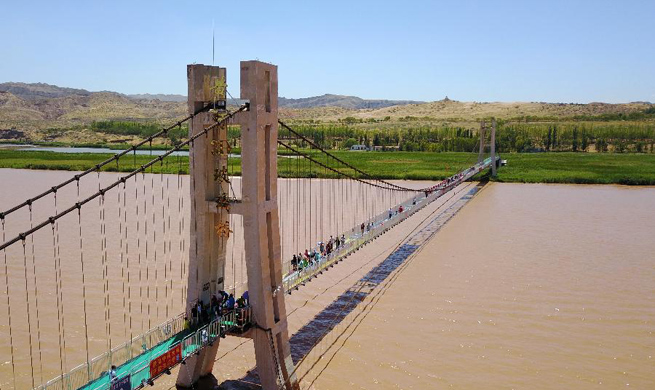SAN FRANCISCO, Aug. 2 (Xinhua) -- By analyzing seismic data from the central United States, researchers have identified similar characteristics in human-induced and natural earthquakes, meaning that both share the same shaking potential and can cause similar damage.
However, asked over the phone about why they believe the findings published Wednesday in Science Advances are applicable around the world, co-author Gregory Beroza, a professor of geophysics at Stanford University, explained that the research was about areas where earthquakes were on the rise due to human activities.
For example, in the central U.S., earthquakes have increased over the past 10 years due to the expansion of unconventional oil and gas operations that discard wastewater by injecting it into the ground. "The stress that is released by the earthquakes is there already; by injecting water, you're just speeding up the process," said Beroza.
The researchers analyzed seismic data from 39 manmade and natural earthquakes ranging from magnitude 3.3 to 5.8 in the central United States and eastern North America. After accounting for factors such as the type of fault slip and earthquake depth, results show the force driving tectonic plates to slip, known as stress drop, of induced and natural earthquakes in the central United States share the same characteristics.
In addition, the team found that most earthquakes in the eastern U.S. and Canada exhibit stronger shaking potential because they occur on what's known as reverse faults. These types of earthquakes are typically associated with mountain building and tend to exhibit more shaking than those that occur in the central United States and California on the U.S. west coast. Although the risk for naturally occurring earthquakes is low, the large populations and fragile infrastructure in this region make it vulnerable when earthquakes do occur.
While the new findings contradict previous observations suggesting that induced earthquakes exhibit weaker shaking than natural ones, the researchers believe their work could help predict future earthquakes and mitigate their potential damage.
"This research sort of simplifies things, and shows that we can use our understanding of all earthquakes for more effective mitigation," Beroza said.
Next step of the research, he said, would be trying to answer why there are similar characteristics.

















